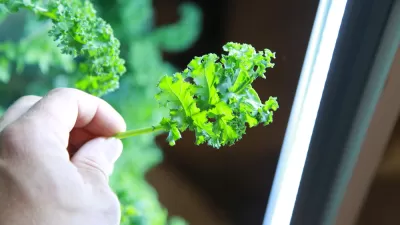Community-supported agriculture (CSA) programs originally let local buyers support local growers. But with a rise in subscription-based "food box" clubs, it's getting harder to say what a real CSA looks like.

There's always been some overlap between alternative and local agriculture, and community-supported agriculture has been a way to operationalize small and local growers for decades. But a new wave of digital entrepreneurs is crowding the space with subscription-based "food box" services, not all of them local.
Samantha Melamed writes, "Now, though, small farmers [...] are finding themselves in competition with a slew of subscription-based food vendors, from meal-kit boxes like Blue Apron to mail-order produce boxes like Farmbox Direct to aggregators who mix local produce with stuff from Florida or Mexico."
Traditional CSA farmers like Emma Cunniff take issue when these services brand themselves as CSAs. "'I've noticed so many cooperative-buying clubs; they're not CSAs, but they have adopted that title because it's really hot and sexy right now. Some of their farms are up to 250 miles away. That's not local agriculture.'"
Nevertheless, the CSA business model has proven useful to entrepreneurs who finance and source from small farming operations. Whether or not they call themselves CSAs—and perhaps they shouldn't—food box subscriptions and similar services have attracted clientele.
FULL STORY: New CSAs may be 'hot and sexy,' but they're not really CSAs

Study: Maui’s Plan to Convert Vacation Rentals to Long-Term Housing Could Cause Nearly $1 Billion Economic Loss
The plan would reduce visitor accommodation by 25,% resulting in 1,900 jobs lost.

North Texas Transit Leaders Tout Benefits of TOD for Growing Region
At a summit focused on transit-oriented development, policymakers discussed how North Texas’ expanded light rail system can serve as a tool for economic growth.

Why Should We Subsidize Public Transportation?
Many public transit agencies face financial stress due to rising costs, declining fare revenue, and declining subsidies. Transit advocates must provide a strong business case for increasing public transit funding.

How to Make US Trains Faster
Changes to boarding platforms and a switch to electric trains could improve U.S. passenger rail service without the added cost of high-speed rail.

Columbia’s Revitalized ‘Loop’ Is a Hub for Local Entrepreneurs
A focus on small businesses is helping a commercial corridor in Columbia, Missouri thrive.

Invasive Insect Threatens Minnesota’s Ash Forests
The Emerald Ash Borer is a rapidly spreading invasive pest threatening Minnesota’s ash trees, and homeowners are encouraged to plant diverse replacement species, avoid moving ash firewood, and monitor for signs of infestation.
Urban Design for Planners 1: Software Tools
This six-course series explores essential urban design concepts using open source software and equips planners with the tools they need to participate fully in the urban design process.
Planning for Universal Design
Learn the tools for implementing Universal Design in planning regulations.
Ascent Environmental
Borough of Carlisle
Institute for Housing and Urban Development Studies (IHS)
City of Grandview
Harvard GSD Executive Education
Toledo-Lucas County Plan Commissions
Salt Lake City
NYU Wagner Graduate School of Public Service



























